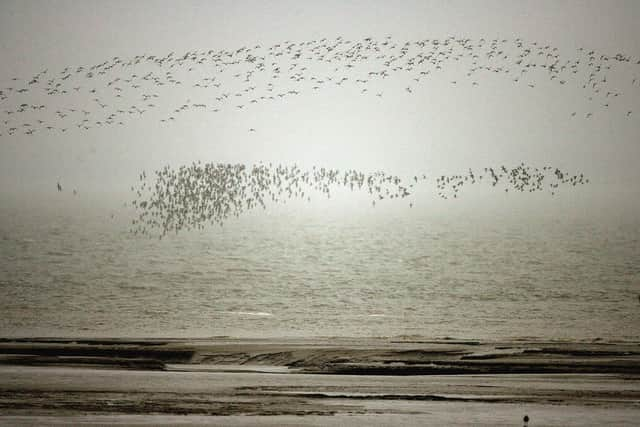Book review: Time and Tide: The Long, Long Life of Landscape, by Fiona Stafford
In his landmark 2015 book Landmarks, Robert Macfarlane, unofficial high priest of the so-called New Nature Writing movement, made a valiant attempt to reclaim the landscape language of these islands before it was lost forever, edged out of dictionaries and everyday speech by tech terminology, and by vocab for describing the virtual world. Among the countless gems lovingly-assembled for his 400-odd-page word-hoard, mountain lovers would have revelled in such terms as the Gaelic “amar”, meaning a hill with precipices, or “cruach”, the Irish word for a rugged peak with pinnacled tops. Meanwhile, those more at home in the woods would no doubt have enjoyed “dumble”, a Nottinghamshire word for a narrow, steep-sided wooded valley, or “rhedynog”, a Welsh word meaning “abounding with ferns”.
“A basic literacy of landscape is falling away,” Macfarlane wrote in his introduction to Landmarks. "A common language, a language of the commons is getting rarer. And what is lost along with this literacy is something precious. A kind of word magic. The power that certain terms possess to enchant our relations with nature and place."
Advertisement
Hide AdAll of this may well still be true; however, in the decade since he wrote those words, it's almost as if the UK publishing industry has collectively rallied to Macfarlane's cause, and set out to produce as much landscape-inspired non-fiction as it can. Last year alone – and in Scotland alone – we had Writing Landscape by Linda Cracknell, The Bone Cave by Dougie Strang, Wild History by James Crawford and The Hidden Fires by Merryn Glover, and the publishers' lists for 2024 suggest there's plenty more where that came from.
It's not just publishers getting in on the landscape act either: as I pointed out at the start of this year, 2024 has kicked off with a flurry of landscape-themed exhibitions around Scotland and elsewhere, notably the three that made up a “Landscape Season” at Edinburgh City Art Centre. And, of course, the year after Landmarks was published Nan Shepherd, the great poet of the Cairngorms landscape, started appearing on Royal Bank of Scotland five pound notes along with an extract from her book, The Living Mountain – so now thousands of transactions every day involve a little poetry of place.
One strand of landscape writing that seems to have gained particular prominence recently has to do with the intersection of landscape and human history and/or stories. If once there was a tendency for nature writers to focus on, even perhaps to fetishise, the “unspoiled” natural world (ie. the bits where there is no obvious trace of human intervention) there now seems to be more of an interest in how the landscapes of these islands – even places commonly thought of as “wild land” – in fact reflect many different layers of human experience. James Crawford's 2023 book Wild History did this brilliantly, showing how evidence of past human activity is to be found in all kinds of supposedly “wild” landscapes, while Dougie Strang's Bone Cave did something similar but perhaps more subtle, looking not at the physical traces left by our ancestors, but rather for traces of old folktales and legends. And now, right on cue, comes what feels in some ways like a logical extension of these two parallel lines of thought: Fiona Stafford's new book Time and Tide.
Subtitled “The Long, Long Life of Landscape”, it is all about finding “portals to the past, to the future and to the elsewhere” in the landscape. “Even an unfamiliar word,” Stafford writes, “or a curious place name can act as cracks in the present, opening into worlds only just out of sight.”
There isn't a huge amount of rhyme or reason to the way Stafford dots around the British Isles – no neat north to south or coast to coast geographical underpinning. What remains constant, however, is a sort of historical X-ray vision, which allows her to look straight through the surface of a given landscape and describe what lies beneath.


In fact, at many of the stops on this engrossing tour of our North Atlantic archipelago, Stafford miraculously manages to blend the approaches of Crawford, Strang and also Macfarlane into one kaleidoscopic, multilayered view.
Advertisement
Hide AdBeside the Solway Firth, for example, she she finds the physical remains of the Victorian railway viaduct that once used to cross its treacherous shifting sands (à la Crawford), but also, (à la Strang), she notes the kelpies who were said to haunt the waters, described by Robert Burns as “mixing a laughing yell with the howling of the storm and the roaring of the flood” – the same Robert Burns, that is, who who spent the last few weeks of his life wading in the Solway on (poor) medical advice before dying in Dumfries in 1796. And speaking of Dumfries, Stafford also explains (à la Macfarlane) that the name means “a woodland stronghold”. If landscape writing is evolving, this book is a good indication of where it’s got to, and also of where it might be heading next.
Time and Tide, by Fiona Stafford, John Murray, £20
